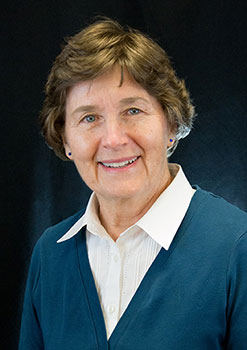
Linda J. S. Allen
Texas Tech University
|
AMS-MAA Invited Address
Modeling of viral zoonotic infectious diseases from wildlife to humans
Friday January 8, 2021, 11:10 a.m.-12:00 p.m.
Zoonotic diseases are infectious diseases transmitted from animals to humans. It is estimated that over 60% of human infectious diseases are zoonotic. Viral pathogens represent a large proportion of emerging and re-emerging infectious diseases, including coronaviruses, ebolaviruses, and orthohantaviruses. Spillover of infection from animals to humans depends on a complex transmission pathway that includes a natural wildlife reservoir and sometimes an intermediate host before transmission to humans. The natural reservoir for SARS and MERS coronaviruses and ebolaviruses is bats and for orthhantaviruses it is rodents (rats, voles, mice). In this presentation, we discuss a few of the modeling efforts to better understand the spread of infection in the natural reservoir and the spillover to humans. The impacts of demographic and seasonal variations on timing of spillover are discussed as well as public health interventions in the prevention and control of zoonotic infectious diseases.
|

Douglas N. Arnold
University of Minnesota
|
AMS Invited Address
Structure preservation in the discretization of partial differential equations
Saturday January 9, 2021, 9:00 a.m.-9:50 a.m.
Many of the most significant and fundamental partial differential equations are associated with underlying geometric and algebraic structures, such as elliptic complexes and their cohomology and Hodge theory. These structures strongly govern behaviors of the equations such as their well-posedness. Such equations arise in numerous applications, including electromagnetics, solid mechanics, fluid mechanics, and general relativity, and their accurate numerical solution is of great importance. But, in many cases, finding accurate numerical methods has proven difficult or impossible. Over the last decade it has become clear that, when the PDEs are discretized for numerical computation, the structures underlying the PDEs must be preserved at the discrete level in order to obtain stable and consistent discretizations needed for convergence. This realization has given rise to structure-preserving discretization, an approach to the discretization of differential equations which brings fields as diverse as geometry, topology, homological algebra, functional analysis, and representation theory to bear on numerical analysis. The new viewpoint has led to remarkable progress, resulting in effective new numerical methods for problems where they were previously unavailable.
|

Dana Bartosova
University of Florida
|
ASL Invited Address
Non-metrizable universal minimal flows
Friday January 8, 2021, 2:00 p.m.-2:50 p.m.
For a topological group G, a continuous action of G on a compact Hausdorff space is called a G-flow. A G-flow is minimal if every orbit is dense. The universal minimal G-flow has every minimal G-flow as a quotient and it is unique up to an isomorphism of flows. Universal minimal flows of infinite-dimensional groups have received considerable attention in the past 15 years due to their connection with finite combinatorics. On the other hand, locally compact, non-compact groups have non-metrizable universal minimal flows, which means the failure of the finitary combinatorial principles. However, other methods are available for locally compact groups and we encounter interesting connections with set theory in our investigation of discrete groups and their products. This is in part a joint work with Aleksandra Kwiatkowska.
|

Anton Bernshteyn
Georgia Institute of Technology
|
ASL Invited Address
Descriptive combinatorics and distributed algorithms
Saturday January 9, 2021, 9:00 a.m.-9:50 a.m.
Descriptive combinatorics is the study of combinatorial problems (such as graph coloring) under additional topological or measure-theoretic regularity restrictions. It turns out that there is a close relationship between descriptive combinatorics and distributed computing, i.e., the area of computer science concerned with problems that can be solved efficiently by a decentralized network of processors. In this talk, I will outline this relationship and present a number of applications.
|
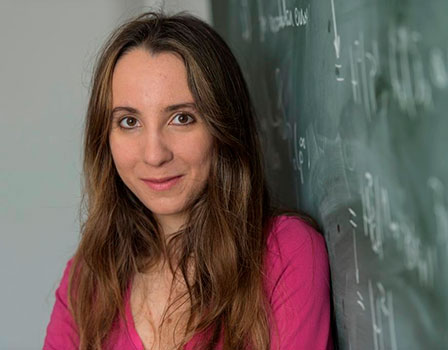
Ana Caraiani
Imperial College London
(Photo Credit - Hausdorff Center for Mathematics)
|
Current Events Bulletin Session - Lecture II
An excursion through the land of shtukas
Friday January 8, 2021, 2:00 p.m.
The Langlands program is an intricate network of conjectures that connect number theory to other areas of pure mathematics and even parts of theoretical physics. These conjectures play a fundamental role in our understanding of arithmetic over global fields, such as the field of rational numbers or the field of rational functions on a curve over a finite field.
Vincent Lafforgue made a deep breakthrough in the global Langlands program over function fields: he gave a general construction of the “automorphic to Galois" direction of the Langlands correspondence. This connects spectral data attached to Hecke operators on the automorphic side with representations of the absolute Galois group of the function field. Lafforgue dreamed up additional symmetries, known as excursion operators, on the automorphic side, and used them as a guide towards the correct Galois representation. I aim to explain what all of this means and then discuss several exciting, even more recent developments in the field.
|

Gabriel Conant
University of Cambridge
|
ASL Invited Address
Model theoretic tameness in multiplicative combinatorics
Friday January 8, 2021, 9:00 a.m.-9:50 a.m.
In combinatorics, an “inverse theorem” is a result in which mathematical objects exhibiting approximate structure are proved to be close to objects that are perfectly structured. A celebrated example is the structure theorem for approximate subgroups due to Breuillard, Green, and Tao, which built on work of Hrushovski.
This talk is about related results in the context of model-theoretic tameness. For example, Martin-Pizarro, Palac´ın, and Wolf showed that under a local stability assumption, a finite approximate subgroup can be approximated by a bounded number of cosets of a finite subgroup, up to error $E > 0$. Their proof combines local stability theory with the stable arithmetic regularity lemma for finite groups due to C., Pillay, and Terry, but gives ineffective bounds. I will first discuss a new proof of this result, which yields polynomial bounds in 1/E. This also provides the first quantitative account of stable arithmetic regularity for arbitrary finite groups, and improves the previous exponential bound in the abelian case (due to Terry and Wolf). I will then describe joint work with Pillay on analogous qualitative results in the setting of bounded VC-dimension, which is motivated by previous work on NIP arithmetic regularity.
|
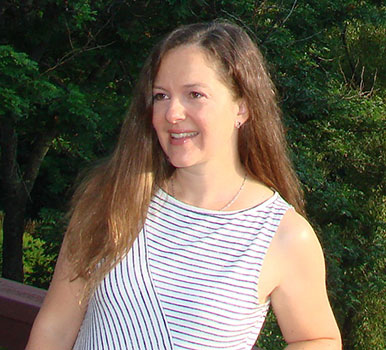
Barbara F. Csima
University of Waterloo
|
ASL Invited Address
Understanding frameworks for priority arguments in computability theory
Friday January 8, 2021, 10:00 a.m.-10:50 a.m.
Priority Arguments are a common proof technique used in Computability Theory. A theorem is broken down to being equivalent to a list of requirements. These requirements are given a priority order, and a strategy is devised to meet all the requirements, making use of the priority order.
Those who know a Computability Theorist know that we love our priority arguments! In this talk, we will discuss why Computability Theory lends itself so well to this proof technique, and discuss at a high level the types of strategies used in priority arguments.
As soon as one first learns of priority arguments, one asks, can we save repeating ourselves, and have a framework for this? In this talk, we will discuss, again at a high level, existing frameworks for priority arguments, with a particular focus on Ash’s $\alpha$-systems and Montalban’s $\nu$-systems. We discuss the general idea of how the frameworks work, their power, and their limitations.
|

Erica Graham
Bryn Mawr College
|
MAA-SIAM-AMS Hrabowski-Gates-Tapia-McBay Session Lecture
Anti-racism in mathematics: Who, what, when, where, why, and how?
Wednesday January 6, 2021, 9:00 a.m.-9:45 a.m.
The Black Lives Matter movement, and many like it, has garnered widespread support for dismantling the racist structures woven into the fabric of our society at large. The academic discipline of mathematics--alongside many institutions of higher education--has also reached a point of reckoning in its history of institutionalizing racism. We must acknowledge the necessity, not choice, of persistent and active anti-racist work in realizing transformative, long-lasting change. In this talk, I will discuss the ‘Five Ws and How’ for anti-racism as my vision for the mathematical community.
|
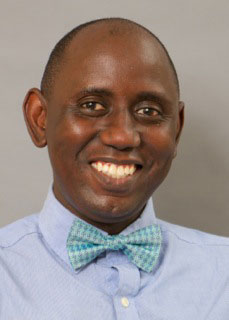
Abba Gumel
Arizona State University
|
Current Events Bulletin Session - Lecture I
Mathematics of the dynamics and control of the COVID-19 Pandemic
Friday January 8, 2021, 1:00 p.m.
The novel coronavirus that emerged in December of 2019 (COVID-19), which started as an outbreak of pneumonia of unknown cause in the city of Wuhan, has become the most important public health and socio-economic challenge humans have faced since the 1918 Spanish flu pandemic. Within weeks of emergence, the highly-transmissible and deadly COVID- 19 pandemic spread to almost every part of the world, so far accounting for nearly 30 million confirmed cases and over 900,000 deaths, in addition to incurring severe economic burden globally. In this talk, I will discuss our work on modeling the spread and control of COVID-19. I hope to convince you that, despite the enormous public health and socio-economic devastation it exudes globally, COVID-19, like its coronavirus cousins (SARS and MERS), is a respiratory disease that is controllable using basic public health interventions.
|
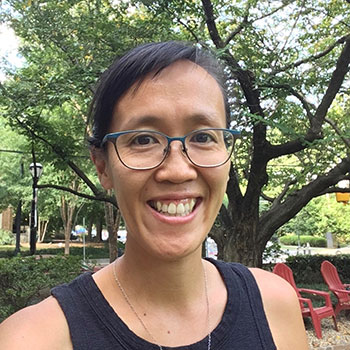
Jennifer Hom
Georgia Institute of Technology
|
Current Events Bulletin Session - Lecture III
Getting a handle on the Conway knot
Friday January 8, 2021, 3:00 p.m.
When does a knot bound a disk? In three dimensions, the only knot that bounds a smoothly embedded disk is the unknot. However, if one considers disks in the four-ball, the answer becomes significantly more difficult.
A knot is called slice if it bounds a smooth disk in the four-ball. For 50 years, it was unknown whether a certain 11 crossing knot, called the Conway knot, was slice or not, and until recently, this was the only one of the thousands of knots with fewer than 13 crossings whose slice-status remained a mystery. In this talk, we will describe Lisa Piccirillo's proof that the Conway knot is not slice. The main idea of her proof is given in the title of this talk.
|
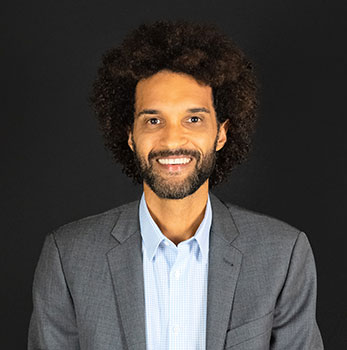
Ryan Hynd
University of Pennsylvania
|
AMS Invited Address
The Hamilton-Jacobi equation, past and present
Friday January 8, 2021, 10:05 a.m.-10:55 a.m.
Nearly two centuries ago, William Rowan Hamilton observed that the equations of motion in classical mechanics can be derived by finding stationary points of a certain integral. In addition, he identified an equation satisfied by the integral itself, which is now known as the Hamilton-Jacobi equation. These ideas were later expanded upon by scientists who grappled with the challenges of understanding how to regulate machines, control spacecrafts, and optimize the production of goods. In recent years, mathematicians have made tremendous progress in developing a theory of control which prominently features a Hamilton-Jacobi equation. We will discuss the highlights of this theory, some applications, and a few theoretical issues of interest today.
|

Trachette Jackson
University of Michigan
|
MAA-AMS-SIAM Gerald and Judith Porter Public Lecture
Turning cancer discoveries into effective treatments with the aid of mathematical modeling
Saturday January 9, 2021, 3:00 p.m.-3:50 p.m.
It is an exciting time to work in the interdisciplinary field of Mathematical Oncology. Even TIME Magazine agrees that “A team-based, cross-disciplinary approach to cancer research is upending tradition and delivering results faster.” Mathematical and computational modeling approaches have been applied to every aspect of cancer biology from tumor initiation to malignant spread and treatment response. A substantial amount of research, aimed at improving therapeutic outcomes for cancers, is now focusing on the molecular biology of individual tumors in an attempt to target pathways involved in tumor progression selectively. Increased understanding of molecular mechanisms that mediate cancer pathogenesis is leading to the targeted manipulation of these pathways and the development of new cell-specific approaches to cancer therapy.
This talk will highlight a suite of mathematical models designed to optimize the use of targeted drug treatment strategies, alone and in combination with traditional chemotherapy, to address the critical challenges associated with targeted cancer therapeutics. These mathematical models, combined with existing and newly generated experimental data, are poised to improve the ability to combine promising drugs for clinical trials. This type of interdisciplinary science can reduce the time and costs associated with transitioning novel therapeutics approaches from “equations to bench to bedside.”
|

Nathan Kaplan
University of California, Irvine
|
MAA Invited Address
Codes from polynomials over finite fields
Thursday January 7, 2021, 9:00 a.m.-9:50 a.m.
Suppose we are trying to communicate over a ‘noisy channel’. I want to send you a single bit, a 1 or a 0, but there is some probability that the bit I send is not the bit you receive. We could communicate more reliably by agreeing to repeat the intended message, for example, instead of sending ‘0' or ‘1', I would send ‘000' or ‘111'. But, there is a cost to this repetition. A major goal in the theory of error-correcting codes is to understand how to efficiently build redundancy into messages so that we can identify and correct errors. In this talk we will focus on error-correcting codes that come from families of polynomials over finite fields, starting from the classical example of Reed-Solomon codes. We will emphasize connections between coding theory, algebraic geometry, and number theory. This talk will assume no previous familiarity with coding theory or algebraic geometry. We will start with the basics and emphasize concrete examples.
|
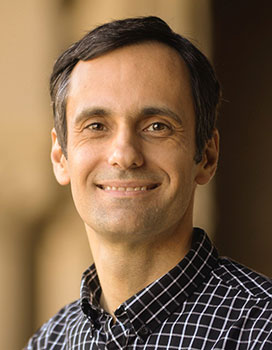
Ciprian Manolescu
Stanford University
|
AMS Maryam Mirzakhani Lecture
Khovanov homology and surfaces in four-manifolds
Thursday January 7, 2021, 2:15 p.m.-3:05 p.m.
Over the last forty years, most progress in four-dimensional topology came from gauge theory and related invariants. Khovanov homology is an invariant of knots in $R^3$ of a different kind: its construction is combinatorial, and connected to ideas from representation theory. There is hope that it can tell us more about smooth 4-manifolds; for example, Freedman, Gompf, Morrison and Walker suggested a strategy to disprove the 4D Poincare conjecture using Rasmussen's invariant from Khovanov homology. It is yet unclear whether their strategy can work, and I will explain some of its challenges. I will also review other topological applications of Khovanov homology, with regard to smoothly embedded surfaces in 4-manifolds.
|
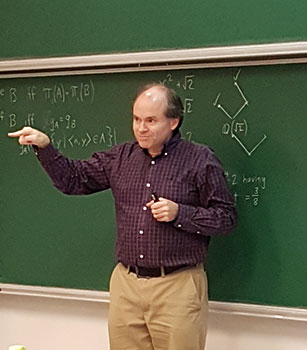
Russell Miller
Queens College & CUNY Graduate Center
|
ASL Invited Address
Computable structure theory with noncomputable structures
Saturday January 9, 2021, 1:00 p.m.-1:50 p.m.
From its inception, computable model theory has used the notion of a computable structure: a structure with domain $\omega$ whose functions and relations can all be computed by Turing machines. This notion enables a logician to focus on the complexity of various aspects of these structures – new relations on them, isomorphisms between them, interpretations of one structure in another – without allowing distractions from complexities that could be baked into the structure.
We describe another approach: treat the atomic diagram of a structure as an oracle, via a G\”odel coding. Even if the structure is not itself computable, one can then ask which aspects can be computed by a Turing functional endowed with such an oracle. On its face, this seems unlikely to yield results much different from those using traditional computable structures. Surprisingly, though, many properties that were quite complex under the traditional approach become far more tractable when oracles for noncomputable structures are considered this way. If anything, the presence of noncomputable structures makes life easier! We will provide several examples of this phenomenon, due to many researchers, illustrated to make them accessible even to logicians with no background in this area.
|

Andrea Nahmod
University of Massachusetts Amherst
(Photo Credit - John Solem)
|
AMS Invited Address
Propagation of randomness under the flow of nonlinear dispersive equations
Thursday January 7, 2021, 3:20 p.m.-4:10 p.m.
The study of partial differential equations (PDEs) with randomness has become an important and influential subject in the last few decades. In this talk we focus on the time dynamics of solutions of nonlinear dispersive equations with random initial data. It is well known that in many situations, randomization improves the behavior of solutions to PDEs: the key underlying difficulty is in understanding how randomness propagates under the ow of nonlinear PDEs. In this context, starting with an overview of J. Bourgain's seminal work on the invariance of Gibbs measures for nonlinear Schr\”odinger equations we describe new methods that offer deeper insights. We discuss in particular the theory of random tensors, a powerful new framework that we developed with Yu Deng and Haitian Yue, which allows us to unravel the propagation of randomness beyond the linear evolution of random data and probe the underlying random structure that lives on high frequencies/fine scales. This enables us to show the existence and uniqueness of solutions to the NLS in an optimal range relative to the probabilistic scaling. A beautiful feature of the solution we find is its explicit expansion in terms of multilinear Gaussians with adapted random tensor coefficients.
We conclude with some future directions and open problems.
|

Christian Rosendal
University of Illinois at Chicago
|
ASL Invited Address
Groups with bounded geometry
Friday January 8, 2021, 1:00 p.m.-1:50 p.m.
Topological and, in particular, Polish groups with bounded geometry form a near perfect geometric generalisation of the locally compact second countable groups. With outset in the recently developed framework for geometric group theory for general topological groups, we shall present a number of results about this specific subclass of Polish groups with a particular focus on coarse embeddings, equivalences and topological couplings.
|

Richard Evan Schwartz
Brown University
|
Current Events Bulletin Session - Lecture IV
Rectangles, Curves, and Klein bottles
Friday January 8, 2021, 4:00 p.m.
The rectangular peg problem is a variant of the notorious square peg problem of Toeplitz, which goes back to to 1911 and asks if every continuous loop contains an inscribed square - i.e., 4 points which form the vertices of a square. The square peg problem has long been known to be true for smooth or polygonal loops, and the case of wild fractal curves is unsolved and is what keeps people up at night.
One can make an even bolder conjecture: Every continuous loop contains an inscribed rectangle of every possible aspect ratio. Until the very recent work of Greene and Lobb, this had been unknown even for smooth loops, though Cole Hugelmeyer had made some inspiring progress on it.
In this talk I will exposit the work of Greene and Lobb as best I can. Their basic idea is to look at the problem in "symplectic coordinates" and, through a surgery construction, reduce the problem to the statement that a certain kind of Klein bottle cannot be embedded in 4 dimensions. This is a bit peculiar because Klein bottles famously do have 4-dimensional embeddings. The key is that the extra constraints make it impossible.
|
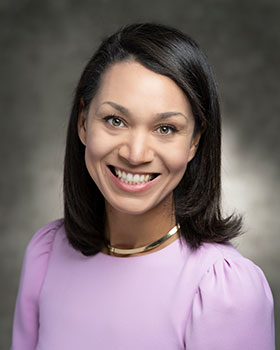
Angela Sheffield
National Nuclear Security Administration
|
MAA Invited Address
Next-generation AI: We're pushing AI beyond ML – and we need your help
Wednesday January 6, 2021, 2:15 p.m.-3:05 p.m.
For highly-specialized, scientific, and high-consequence industries like research and national security, most off-the-shelf machine and deep learning models do not work. We’re drowning in data, but have few (if any!) labels or examples of what we’re looking for. Our methods must obey the laws and fundamental principles of physics and social science and leverage awareness from these domains to improve performance. And we may develop, train, and validate our models on data that is statistically different from the data the model will encounter once deployed. In the world beyond cat videos and retrieval systems – in the world of nuclear security – we need new, multidisciplinary AI methods grounded in mathematics and statistics. And we need mathematicians like you to help us build them!
In this talk, I will discuss research at the DOE National Laboratory Complex that is pushing the state-of-the-art to develop the next-generation of AI approaches and technologies to address the nation’s toughest scientific and security challenges.
|
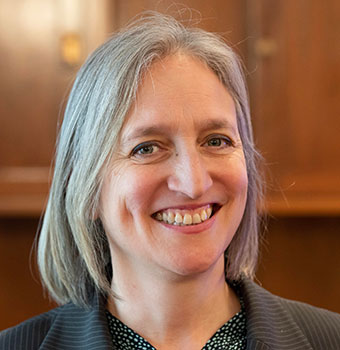
Stephanie Singer
Hatfield School of Government, Portland State University and Verified Voting
|
MAA Invited Address
Detecting anomalies in the 2020 election
Friday January 8, 2021, 9:00 a.m.-9:50 a.m.
Election systems are critical infrastructure, protecting elections is part of national security. The right to vote, and to know that the winners are legitimate, is fundamental to American democracy. This talk will present the election data ecosystem and practical challenges to consolidating data. We will discuss recent innovations in using anomaly detection to protect the integrity of elections, drawing examples from the 2020 US Elections.
|
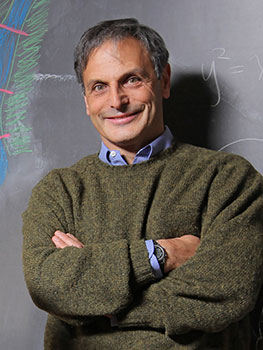
Charles Steinhorn
Department of Mathematics and Statistics, Vassar College
|
ASL Invited Address
Asymptotic and multidimensional asymptotic classes of finite structures
Saturday January 9, 2021, 10:00 a.m.-10:50 a.m.
Asymptotic classes of finite structures and measurable structures were introduced by D. Macpherson and the speaker in an effort to develop a model theory for classes of finite structures that reflects contemporary infinite model theoretic themes. This talk surveys work on that topic, including contributions of several others, and on current research that generalizes those concepts to what are called multidimensional asymptotic classes and generalized measurable structures. This most recent work is joint with Macpherson, S. Anscombe, and D. Wolf.
|

Chelsea Walton
Rice University
|
MAA Invited Address
Navigating collaboration
Wednesday January 6, 2021, 3:20 p.m.-4:10 p.m.
I have listened to many talks--- well over 500 talks if I had to guess. Most of the presentations have been on someone's accomplishments (the speaker’s or others’), but rarely have I’ve seen a discussion of how these theorems, articles, and programs developed. How do mathematical ideas originate and evolve? For collaborative projects in particular, how exactly do people do 'groupwork' in mathematical research?
In this talk, I aim to pull back the curtains and show that this process is not magic both by sharing some behind-the-scenes stories of my own work and by providing some concrete tips for working on collaborative research projects.
|

Chelsea Walton
Rice University
|
NAM Claytor-Woodard Lecture
An invitation to noncommutative algebra
Saturday January 9, 2021, 1:00 p.m.-1:50 p.m.
This talk will delve into the wonderful world of Noncommutative Algebra, primarily discussing the roles of Symmetry, Representations, and Deformations in this area of mathematics. The talk will contain a mix of classical results, the speaker’s research contributions, as well as open questions and entertaining anecdotes in this very active area of research. It will be based on the speaker’s survey article of the same title, published in the 2019 EDGE program volume for the AWM Springer series.
|
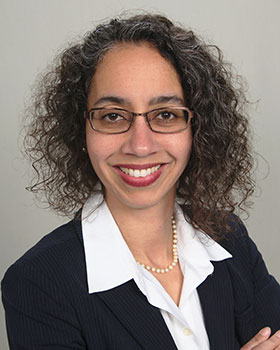
Talitha Washington
Clark Atlanta University and the Atlanta University Center
|
NAM Cox-Talbot Address
Leveraging data science at HBCUs to advance innovation
Thursday January 7, 2021, 5:00 p.m.-5:50 p.m.
With the abundance of data, new skills will be needed to prepare students for jobs that do not yet exist. As we develop new data science tools and platforms, innovations in research are needed to advance the field of data science. Historically Black Colleges and Universities (HBCUs) have the unique opportunity to develop novel ways to address ethics and bias issues associated with data science research. As mathematics is a cornerstone of data science, this presentation will share recent advancements in data science at HBCUs and how policy encourages advancement in the data science innovation ecosystem.
|

Amie Wilkinson
University of Chicago
|
AMS-MAA Invited Address
Symmetry and asymmetry in dynamics
Wednesday January 6, 2021, 11:10 a.m.-12:00 p.m.
In classical mechanics, symmetry occurs for a reason: there is a conserved quantity such as angular momentum. This is Noether’s theorem, and it points to a broader theme in dynamics that symmetry is rare and meaningful. I will discuss, in the contexts of modern dynamics and geometry, how this theme recurs in beautiful ways: on the one hand, a typical object has the minimum amount of symmetry possible, and on the other hand, a little extra symmetry implies a lot of symmetry, a phenomenon known as rigidity.
|
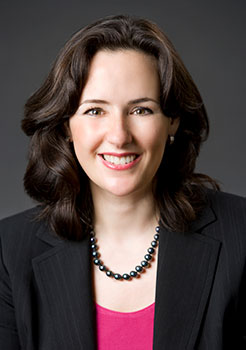
Thaleia Zariphopoulou
University of Texas at Austin
|
SIAM Invited Address
Human-machine interaction models and stochastic optimization
Thursday January 7, 2021, 11:10 a.m.-12:00 p.m.
I will introduce a family of human-machine interaction (HMI) models in optimal asset allocation, risk management and portfolio choice (robo-advising). Modeling difficulties stem from the limited ability to quantify the human’s risk preferences and describe their evolution, but also from the fact that the stochastic environment, in which the machine optimizes, adapts to real-time incoming information that is exogenous to the human. Furthermore, the human’s risk preferences and the machine’s states may evolve at different scales. This interaction creates an adaptive cooperative game with both asymmetric and incomplete information exchange between the two parties.
As a result, challenging questions arise on, among others, how frequently the two parties should communicate, what information can the machine accurately detect, infer and predict, how the human reacts to exogenous events, how to improve the inter-linked reliability between the human and the machine, and others. Such HMI models give rise to new, non-standard optimization problems that combine adaptive stochastic control, stochastic differential games, optimal stopping, multi-scales and learning.
|
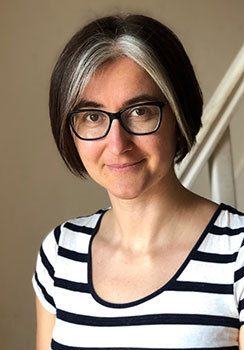
Lenka Zdeborová
École Polytechnique Fédérale de Lausanne
|
AMS Josiah Willard Gibbs Lecture
What physics teaches us about computation in high dimensions
Wednesday January 6, 2021, 1:00 p.m.-1:50 p.m.
Computational questions in high-dimensional problems are ubiquitous, yet we still lack a satisfying theoretical framework able to answer most of them. Corresponding problems often map to certain statistical-physics systems where the high dimension translates into a large number of interacting elements. Theoretical tools of statistical physics can then be deployed to study computational problems and inform both mathematical and algorithmic developments. We will highlight some key results in this field with examples of applications in artificial neural networks, and in signal processing. We will discuss results that have led to new mathematical development and well as others that are still open and inspiring current research.
|

Xinwen Zhu
California Institute of Technology
|
AMS Invited Address
Arithmetic and geometric Langlands program
Wednesday January 6, 2021, 10:05 a.m.-10:55 a.m.
The Langlands program, proposed by Robert Langlands in 1960s, unifies many questions in number theory and representation theory, and has found significant applications to solving classical Diophantine equations. Its geometric version, formulated by Drinfeld and Laumon in 1980s, enlarges the scope of the Langlands philosophy and makes it contact with other subjects such as physics. Interestingly, in recent years, some ideas from the geometric theory also inspire and lead developments of the traditional arithmetic theory and related problems. I will give an impression of some of these recent developments.
|

